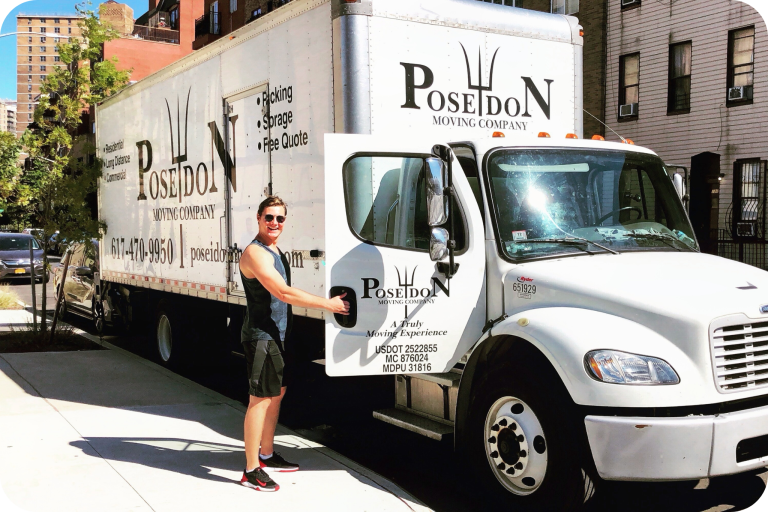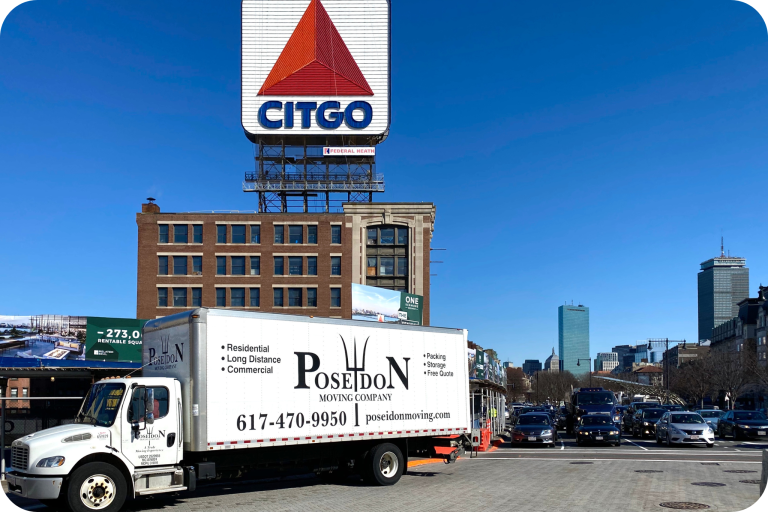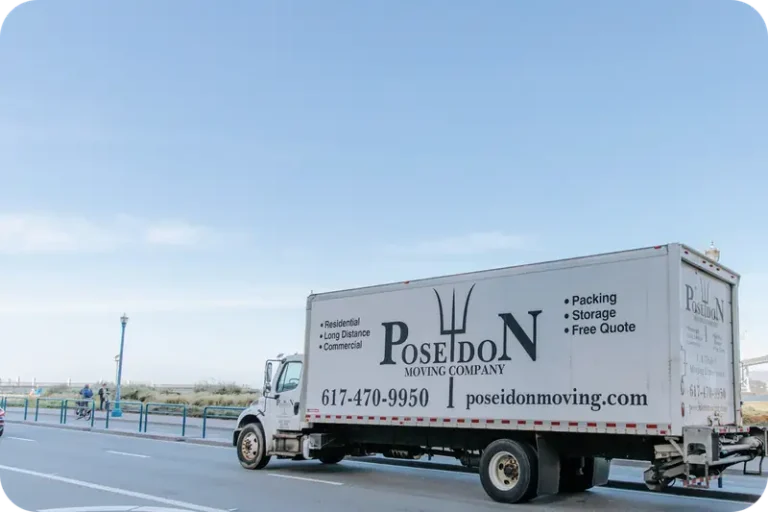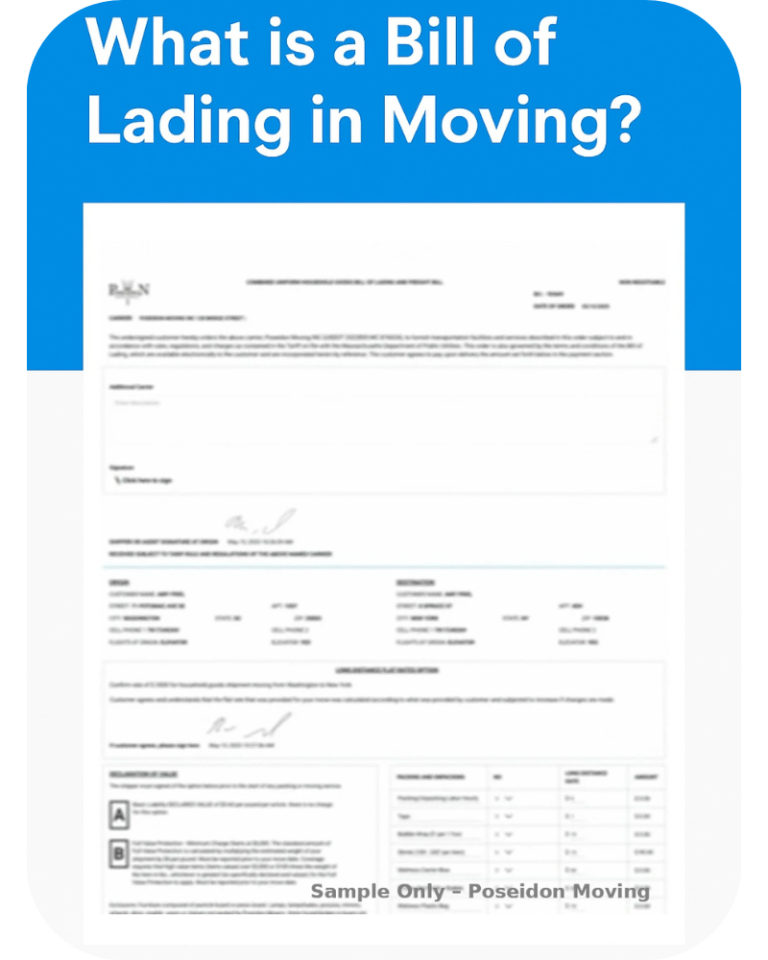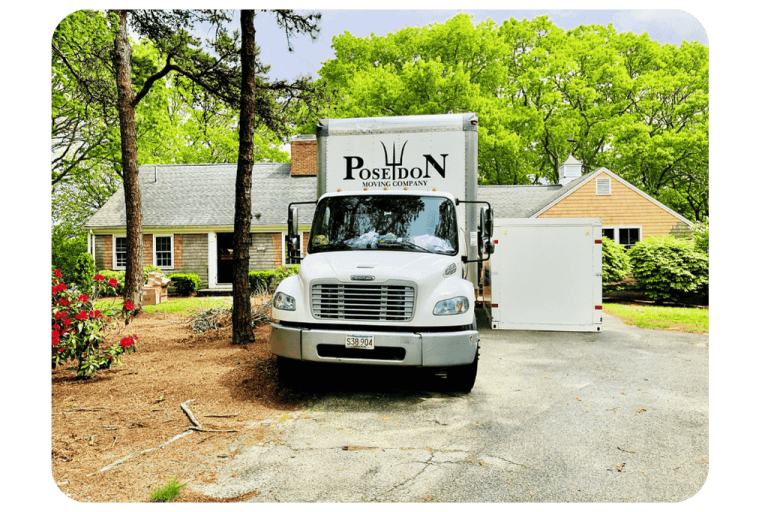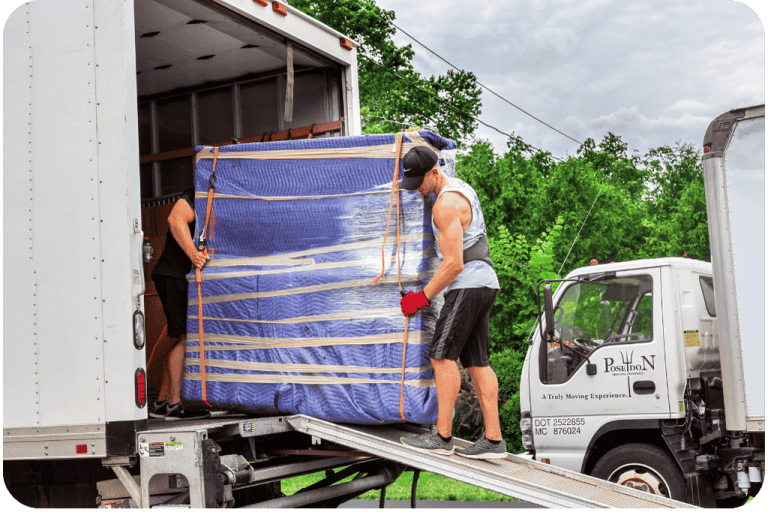Confused by moving terms like bill of lading, consolidated move, or valuation coverage? You’re not alone. Planning a move is already stressful—and unfamiliar language can make it even harder. That’s why we created this easy-to-follow glossary, breaking down 100 essential moving terms to help you feel confident, informed, and in control from start to finish.
Types of Moving Services
Local Move
A move within the same city or metro area. Typically completed in one day and charged by the hour.
Long-Distance Move
A move that spans over 100 miles or crosses state lines. These moves require more logistics and planning.
Cross-Country Move
A coast-to-coast or multi-state move involving extended travel time and more complex coordination.
Intrastate Move
A move within the same state that covers a long distance but does not cross state lines.
Interstate Move
Any move that crosses state lines, regardless of distance. Regulated by federal authorities.
Residential Move
Relocation from a house, condo, or apartment involving personal belongings and household items.
Commercial Move
Relocation of a business or office, including furniture, computers, and business equipment.
White-Glove Service
A premium moving service that includes careful handling, full packing, unpacking, and item setup.
Express Delivery
A faster delivery option, often within one to three days, depending on distance and route.
Guaranteed Date
A confirmed pickup or delivery date agreed upon in advance—ideal for time-sensitive moves.
Consolidated Move / Shared Truck
Your items are shipped alongside other customers’ belongings to save costs. Delivery times may be flexible.
Dedicated Truck
A moving truck reserved exclusively for your shipment. Ensures quicker, direct delivery.
Shuttle Service
Used when a large moving truck can’t access your location. Items are transferred to a smaller vehicle.
Full-Service Movers
A company that handles every aspect of the move—from packing and loading to delivery and setup.
DIY Move
A self-managed move where you rent a truck, pack, load, and drive without hiring professionals.
Hybrid Move
A combination of DIY and professional services, such as renting a truck but hiring movers to load.
Estimates & Pricing
Binding Estimate
A guaranteed, fixed price based on the agreed-upon inventory and services.
Non-Binding Estimate
A quote that may increase or decrease depending on the actual time, weight, or volume.
Not-to-Exceed Estimate
The final price won’t exceed the estimate, but you may pay less if the actual cost is lower.
Flat Rate Pricing
A fixed cost for your entire move, regardless of time or weight.
Hourly Rate
Pricing based on the number of hours worked, common for local moves.
Fuel Surcharge
An additional fee to cover fuel expenses, especially for long-distance or high-mileage moves.
Stairs Fee
A charge for moving items up or down staircases.
Elevator Fee
A fee for moves requiring use of building elevators.
Long Carry Fee
Charged when movers must carry items more than 75 feet from the truck to the entrance.
Peak Season Pricing
Higher rates charged during busy moving months—typically May through September.
Heavy Carry
An additional charge for transporting especially heavy or bulky items.
Minimum Hours Requirement
A minimum billable time, often two or three hours, even if the move is shorter.
Travel Time / Drive Time
Billed time covering the crew’s travel to and from your location.
Deposit
A payment made upfront to secure your move date. At Poseidon Moving, it’s $200 for local moves and 40% for long-distance.
Accessorial Charges
Fees for extra services such as crating, appliance servicing, or storage beyond standard moving.
Rate Confirmation Sheet
A document confirming your final price, terms, and services before moving begins.
Paperwork & Legal Terms
Service Agreement
A formal contract outlining the terms and conditions of your move.
Bill of Lading
The official moving document that functions as both a receipt and a legal contract.
Order for Service
A written confirmation of your move details, including dates and services.
Inventory Sheet
A list of all items being moved, used to track your belongings before and after delivery.
Valuation Coverage
The mover’s level of financial responsibility for lost or damaged items.
Claims Process
The procedure for reporting and resolving loss or damage during the move.
Waiver of Liability
A form that may release movers from certain responsibilities under specific conditions.
COI (Certificate of Insurance)
Proof of insurance often required by apartment buildings or office managers before moving.
FMCSA
The Federal Motor Carrier Safety Administration, which regulates interstate moving companies.
Tariff
A document outlining all of a mover’s fees, rules, and policies. Required for licensed carriers.
Cubic Footage Estimate
An estimate based on the space your items occupy, not their weight—common in flat-rate moves.
Packing & Materials
Full Packing Service
Movers pack all your belongings using professional packing materials.
Partial Packing
Only select items or rooms are packed, depending on your preference.
Fragile-Only Packing
Professional packing of breakables like dishes, artwork, and electronics.
Packing Materials
The supplies used to secure your items, such as boxes, tape, paper, and bubble wrap.
Crating
Custom wooden enclosures used for shipping delicate or oversized items.
Wardrobe Box
A tall box with a hanging bar for clothes, ideal for keeping garments wrinkle-free.
Dish Pack
Specially divided boxes to protect fragile dishware during transit.
Mattress Bag
A plastic or fabric cover that protects mattresses from dirt or damage.
Shrink Wrap
Plastic film wrapped around furniture to secure doors, drawers, and padding.
Moving Blankets
Thick, padded coverings used to cushion and protect furniture during loading and transit.
TV Box
A reinforced box designed to safely transport flat-screen televisions.
Mirror Box
A narrow box made to safely transport mirrors, framed art, or glass tabletops.
Packing Peanuts
Lightweight foam fillers used to prevent items from shifting inside a box.
Logistics & Delivery
Delivery Window
The estimated range of dates your belongings are expected to arrive.
Delivery Spread
Another term for delivery window, typically used in long-distance moving estimates.
First Available Date
The earliest date you can receive your delivery based on your readiness.
Linehaul
The long-distance portion of a move, often priced by weight or volume.
Linehaul Weight
The actual weight of your shipment, used to determine final moving costs.
Volume
The total amount of space your shipment takes up, measured in cubic feet.
Offload
The process of unloading your items from the truck at your destination.
Storage-in-Transit (SIT)
Short-term storage for your belongings when your new home isn’t ready.
Delivery ETA
The estimated arrival time, typically shared closer to the delivery day.
Routing Window
Flexible scheduling used to group deliveries efficiently, especially for shared truck moves.
Exclusive Move
A move where your items are the only ones on the truck, resulting in faster, more direct service.
Terminal-to-Terminal
A service where you drop off and pick up your items at the mover’s facility rather than door-to-door.
Insurance & Liability
Released Value Protection
Basic liability coverage included with most moves—$0.60 per pound per item.
Full Value Protection
Comprehensive protection that covers the replacement or repair value of lost or damaged items.
Deductible
The portion of a loss you must pay before insurance coverage begins.
Carrier Liability
The mover’s legal responsibility for your belongings during the move.
Third-Party Insurance
Additional coverage purchased through an outside provider, not included by the mover.
High-Value Items
Items worth more than $100 per pound that must be listed separately for full protection.
Declared Value
The total monetary value you assign to your shipment for liability purposes.
Valuation vs. Insurance
Valuation is the mover’s legal responsibility. Insurance is optional, outside protection you purchase separately.
Labor & Moving Crew
Dispatch
The office team responsible for scheduling trucks, assigning crews, and tracking routes.
Foreman
The lead mover responsible for directing the crew and ensuring your move runs smoothly.
Crew Lead
A team member in charge of managing on-site logistics—often interchangeable with foreman.
Helpers
Crew members who assist with lifting, carrying, and setting up items during the move.
Labor-Only Movers
Movers hired for loading or unloading only, without providing a truck or transport.
Load/Unload Only
Services where movers help move items into or out of a vehicle or storage unit you provide.
Disassembly/Reassembly
Breaking down and reassembling beds, furniture, and large items for transport.
Debris Removal
Removal of leftover packing materials and boxes after delivery is complete.
Walkthrough
A final check of your property before and after loading to ensure nothing is left behind.
ETA Updates
Text or phone updates with real-time arrival estimates, usually 30–60 minutes in advance.
On-Site Estimate
An in-person or video inspection to evaluate inventory and give a more accurate quote.
Moving Coordinator
Your main contact who oversees scheduling, planning, and communication throughout the move.
Storage & Additional Services
Short-Term Storage
Temporary storage for a few days or weeks, often used between move-out and move-in.
Long-Term Storage
Storage for several months or more—common during long-distance moves or renovations.
Climate-Controlled Storage
Storage units kept at a stable temperature and humidity for sensitive items.
Overnight Truck Hold
When your belongings stay on the truck overnight due to delivery timing or access restrictions.
Furniture Assembly
Rebuilding furniture pieces like beds, desks, or tables after they’re delivered.
Appliance Disconnect/Reconnect
Safely disconnecting and reinstalling items like washers, dryers, or stoves.
Senior Moving Services
Tailored support for older adults, including downsizing, packing help, and emotional support.
Last-Minute Moves
Moves scheduled on short notice—usually within 24 to 48 hours.
Storage Vault
A sealed wooden unit used to hold your items inside a warehouse facility.
Mobile Storage
A container dropped off at your home, then picked up for storage or long-distance transport.
Common Red Flags & Industry Scams
Hostage Move
When movers demand additional payment to release your belongings—an illegal practice.
Lowball Estimate
A quote that seems unusually low upfront but increases with hidden fees later.
Hidden Fees
Extra charges that weren’t included in the original estimate, often for stairs, fuel, or packing.
Broker vs. Carrier
Brokers book your move and subcontract to a carrier. Carriers are the actual moving companies.
Double Drive Time
A method where drive time is charged both to and from your location—legal in some states.
Unlicensed Movers
Companies operating without required federal or state licenses. Always verify credentials.
Phantom Movers
Fake moving companies that collect deposits and disappear without completing the job.
Bait and Switch
A tactic where the quoted price is replaced with a higher one on moving day.
No-Walkthrough Estimate
Estimates given without viewing your home or inventory. Often leads to surprise charges.
Understanding the language of moving makes the entire process smoother—from reviewing quotes and contracts to communicating clearly with your movers. Whether you’re relocating across town or across the country, knowing these terms helps you avoid hidden fees, set clear expectations, and plan with confidence.
At Poseidon Moving, we believe every great move starts with clarity and ends with peace of mind. If you’re preparing for a local or long-distance move, we’re here to help—no confusion, no last-minute surprises, just professional service you can trust.
